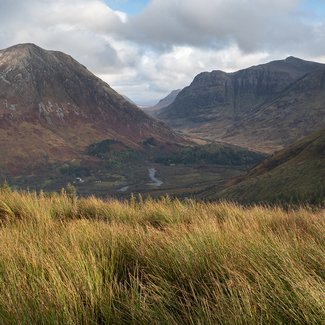
The Munros
The Munros refers to a group of mountains in Scotland whose summits are more than 3,000ft above sea level. They are named after Sir Hugh Munro, who first produced a list of all peaks above this height in 1891.

Where are the Highlands?
Whilst anyone you ask can probably conjure up an image of the Scottish Highlands in their minds, this is actually not as straightforward a question as it might appear!
Historically, the Highlands (as distinct from the Lowlands) referred to anywhere north-west of the Highland Boundary Fault, which runs from Helensburgh in the west to Stonehaven in the east of Scotland.
The Scottish Gaelic word for the Highlands is A' Ghàidhealtachd, linking the geographic definition to where the Gaelic language is spoken. From this perspective, the 'Highlands' would also include the islands of the Outer Hebrides.
These days, the exact geographic boundaries of the Highlands are also not clear. Sometimes, 'the Highlands' is sometimes used interchangeably with the Highland Council area, which includes Fort William & Lochaber, Wester Ross, the isles of Skye & Raasay, Inverness, Badenoch & Strathspey, and Caithness & Sutherland (although sometimes not all of it). This is, however, much smaller than what many would regard as the Highlands, which is usually understood to include parts of at least eight other Scottish council areas, including Argyll & Bute, Perth & Kinross, Moray and Aberdeenshire.
The definition was traditionally linked to language and culture, and these days the geography of the area seems more relevant when determining what is - and is not - the Highlands. For the whisky industry, the Highlands includes anywhere north of an imaginary line drawn from Dundee in the east to Greenock in the west, but various signs dotted around the country disagree - both with this definition and often with each other! For Visit Scotland, the Highlands includes 'only' the 30,000 square kilometres of the Highland Council area.